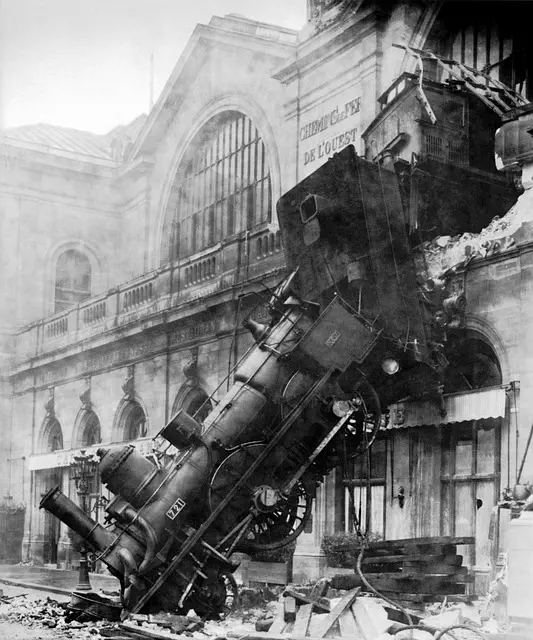Cyclists in Brooklyn, Bronx, and Manhattan have specific rights and laws protecting their presence on city roads. They can occupy full lanes, signal turns, and use designated bike paths. Understanding these rules is crucial for safety and accident prevention. Local accident attorneys specializing in bicycle law are recommended after accidents to protect cyclist rights and seek fair compensation. Regulations vary between boroughs, affecting behavior and potential collision risks that require expert legal counsel.
Cyclists navigating Manhattan, Brooklyn, and the Bronx face unique challenges and rights. Understanding your right-of-way is crucial for safety, but regulations vary across these boroughs. This article demystifies cyclist laws in Manhattan, offers accident prevention strategies, and guides you through post-accident legal steps. You’ll also discover local advocacy groups working to enhance cycling safety. For Brooklyn, Bronx, or Manhattan accident legal support, consult a specialist attorney.
- Understanding Cyclist Right-of-Way Laws in Manhattan
- – Overview of New York State's bicycle laws and their application within Manhattan.
- – Explanation of the right of way concept for cyclists.
- Brooklyn, Bronx, and Manhattan: Unique Cycling Regulations
- – Comparison of cycling regulations across Brooklyn, the Bronx, and Manhattan, highlighting local nuances and differences.
Understanding Cyclist Right-of-Way Laws in Manhattan

In Manhattan, Brooklyn, and the Bronx, cyclists have specific rights and laws protecting their way on the road. Understanding these rules is crucial for both cyclist safety and preventing accidents involving vehicles. Cyclists are considered vehicle operators under New York law, granting them full rights and responsibilities on the roadway. This includes the right to occupy the full lane when necessary, especially when passing or avoiding hazards.
When it comes to yielding and right-of-way, certain regulations apply. In general, drivers must yield to cyclists at intersections and when they are turning onto a main road. Cyclists should also signal their intentions clearly using hand gestures or lights. Brooklyn, Bronx, and Manhattan accident attorneys often emphasize the importance of these signals for conflict resolution in case of accidents. Additionally, cyclists have the right to use bike lanes and paths, ensuring they can navigate these urban areas safely.
– Overview of New York State's bicycle laws and their application within Manhattan.

New York State’s bicycle laws provide a clear framework for cyclist rights and responsibilities. Within Manhattan, these laws are strictly enforced to ensure safe navigation on bustling city streets. Bicyclists have the same rights as motorists, including the right to occupy the full lane when necessary, signal turns, and stop at red lights or stops signs. However, they must also follow specific rules, such as yielding to pedestrians in crosswalks and obeying all traffic signals and signs.
In cases of accidents involving cyclists, Brooklyn and Bronx residents often turn to Manhattan accident attorneys specializing in bicycle law. These legal professionals are equipped to navigate the complexities of state and local regulations to protect the rights of cyclists and ensure they receive fair compensation for any injuries or property damage suffered during an incident on the roads of New York City.
– Explanation of the right of way concept for cyclists.

In Manhattan, Brooklyn, and the Bronx, cyclists have a right of way, just like any other vehicle on the road. This means that when a cyclist is riding within their designated lane, they are legally entitled to the same rights and protections as motorists. Understanding this concept is crucial for both cyclists and drivers alike to ensure safe navigation through the bustling city landscape. Cyclists should be aware of their responsibilities and the rules governing their right of way, while drivers need to be extra vigilant and respectful of these rights.
When a cyclist is riding in a marked bike lane or on the sidewalk (where allowed), they have the right to occupy that space. Drivers must yield and give the cyclist the appropriate distance and time to maneuver, just as they would for any other vehicle. This includes slowing down or stopping if necessary, signaling before making turns, and maintaining a safe distance. In the event of an accident involving a cyclist, seeking guidance from a Brooklyn or Bronx accident attorney specializing in such cases is advisable to understand one’s legal rights and options.
Brooklyn, Bronx, and Manhattan: Unique Cycling Regulations

In Brooklyn, Bronx, and Manhattan—the vibrant heartbeats of New York City—cyclists face unique regulations that can significantly impact their safety. Each borough presents distinct challenges and rules regarding cyclist rights of way. For instance, Brooklyn’s narrow streets and bustling traffic may require cyclists to be extra cautious when navigating through intersections, while the Bronx’s hilly terrain demands a different set of skills. Manhattan, known for its labyrinthine network of roads, poses unique dangers due to high pedestrian and vehicle volumes.
Understanding these local regulations is crucial for both residents and visitors alike. A Brooklyn, Bronx, or Manhattan accident attorney can offer valuable insights into how these laws are interpreted in real-world scenarios, helping cyclists protect their rights and ensuring they are well-informed about their responsibilities. This knowledge is essential for preventing accidents and fostering a safer cycling environment across the city.
– Comparison of cycling regulations across Brooklyn, the Bronx, and Manhattan, highlighting local nuances and differences.

Cycling regulations in New York City vary between boroughs, presenting cyclists with a complex web of rules to navigate. Brooklyn, The Bronx, and Manhattan each have their own unique cycling laws and nuances that can significantly impact safety and liability in case of accidents involving cyclists.
In Brooklyn, cyclists enjoy relatively more freedom on the road compared to Manhattan. For instance, Brooklyn allows biking on sidewalks in certain areas, while Manhattan generally prohibits it. This local law can lead to different cyclist behavior and interaction with pedestrians across these boroughs. The Bronx has its own set of rules, such as requiring cyclists to signal stops and turns, which aligns more closely with Manhattan’s regulations. However, the enforcement of these laws varies, potentially affecting how cyclists are treated on the roads. For instance, a Brooklyn accident attorney specializing in cycling cases might handle a claim involving a rider who was not allowed to take a lane due to a lack of enforcement of right-of-way rules, leading to an accident.
Understanding the right-of-way laws for cyclists in New York City is essential for both riders and Brooklyn, Bronx, and Manhattan accident attorneys alike. Each borough presents unique cycling regulations, requiring vigilance and knowledge to ensure safe navigation. By adhering to these rules, cyclists can minimize risks and contribute to a smoother, more harmonious urban environment. Remember that, as a cyclist or legal professional, staying informed about local laws is key to preventing accidents and promoting cycling safety across the city.
